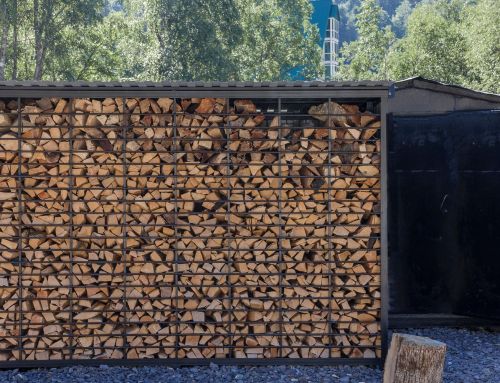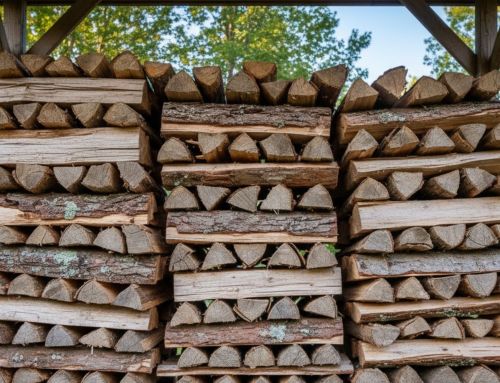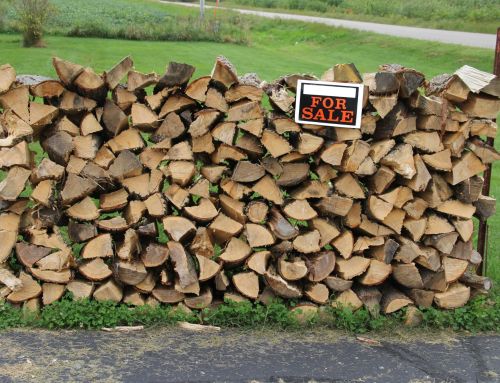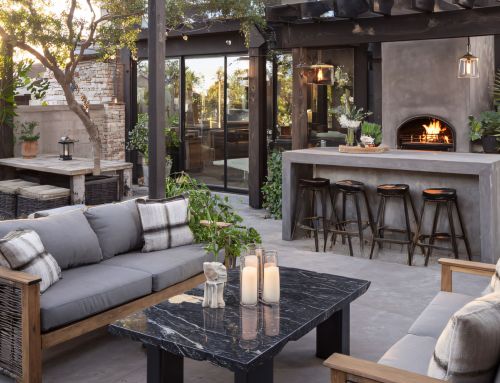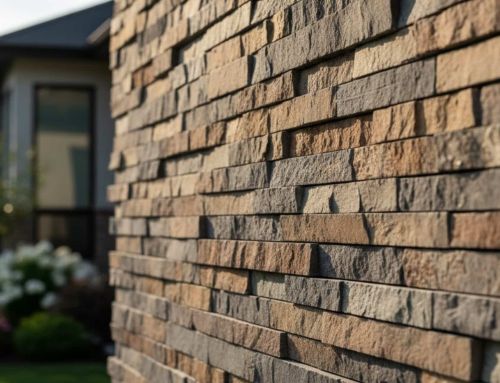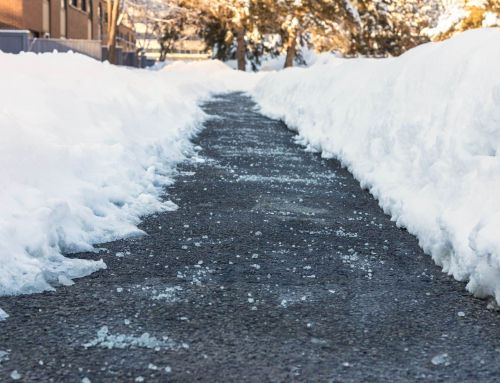Cultured stone is a popular choice for homeowners and designers seeking the beauty of natural stone. It offers a timeless, elegant appearance suitable for any space. This material is made from cement, mineral pigments, and lightweight aggregates. Together, these components mimic the texture, color, and depth of real stone. It provides the same visual appeal but is lighter and easier to install. Because it’s more affordable, cultured stone works well for both new builds and remodels.
You can use cultured stone from Old Station Outdoor & Landscape Supply to upgrade fireplaces, exterior walls, or interior accent spaces. It offers flexibility for many design styles. This material combines artistry with practical performance in every project. It allows you to express creativity while improving durability and value. Homeowners appreciate its lasting beauty and easy maintenance. This guide covers benefits, installation, costs, and care to help you plan confidently.
What Is a Cultured Stone?
Cultured stone, also known as manufactured stone veneer, is a man-made alternative to natural stone. It’s created by blending cement, lightweight aggregates, and mineral pigments, then molded to mimic the texture and color of real stone. The result is a durable yet lightweight product that gives you the natural beauty of stone without the high cost or structural demands.
Unlike natural stone, which is quarried and cut into pieces, cultured stone is crafted in controlled environments. This allows for precise texture, consistent color, and easier installation. It’s designed to deliver maintenance-free performance while capturing the depth and character of genuine stone. If you plan to update your home’s exterior, design an accent wall, or add a fireplace surround to enhance your surroundings, consider cultured stone. It delivers craftsmanship and beauty that can elevate any space.
Advantages of Cultured Stone
Choosing cultured stone offers several advantages, including sustainability, which makes it an excellent alternative to natural materials. Homeowners and designers alike appreciate its flexibility, cost savings, and environmental benefits.
Lightweight and Easy to Install
Cultured stone weighs significantly less than natural stone, which means it doesn’t require additional structural support. This makes it suitable for both new construction and remodels. Contractors can complete installations faster, reducing labor time and costs. Its modular profiles also make it easy to cut, fit, and install on nearly any surface.
Design Variety
One of the biggest benefits of cultured stone is its broad range of textures, profiles, and colors. From rustic ledgestone to modern fieldstone, you can choose from dozens of styles to complement any architectural style. This flexibility makes it ideal for homeowners who want to bring creativity and personal expression to their projects.
Cost Efficiency
On average, cultured stone costs 25–50% less than natural stone, depending on the style and brand. Installation is also less labor-intensive, offering additional savings. This makes it an appealing option for both residential and commercial projects that need a premium look at a manageable cost.
Durability and Low Maintenance
Designed for long-term performance, cultured stone resists fading, cracking, and harsh weather. With proper installation, it can last for the life of the building, decades with minimal upkeep. It’s also resistant to pests, mold, and moisture. This makes it a reliable, long-term investment.
Eco-Friendly Construction
Because cultured stone is made from natural materials like cement and aggregates rather than quarried stone, it’s more sustainable. It reduces transportation emissions and supports efficient resource use, which helps establish it as an eco-conscious choice for modern building projects.
Comparison Table: Cultured Stone vs. Natural Stone
| Feature | Cultured Stone | Natural Stone |
|---|---|---|
| Weight | Lightweight | Heavy |
| Cost | $$ (Affordable) | $$$$ (Expensive) |
| Installation Time | Fast & easy | Labor-intensive |
| Maintenance | Minimal | Requires sealing |
| Variety | Many styles & colors | Limited availability |
Applications and Design Ideas
Cultured stone can transform any space by adding a touch of timeless elegance and visual texture. Because of its versatility, it fits seamlessly into both traditional and contemporary designs.
Exterior Applications
Cultured stone enhances curb appeal by adding depth and character to home exteriors. It’s often used for:
- Siding and facades to create a natural, upscale appearance
- Chimneys and pillars for architectural detail
- Outdoor kitchens and fire pits that bring luxury to backyard living spaces
Interior Applications
Inside the home, cultured stone can create focal points that elevate everyday spaces. Popular uses include:
- Fireplace surrounds and feature walls for a warm, inviting atmosphere
- Kitchen backsplashes that blend durability with style
- Bathroom accents or entryway columns that introduce texture and craftsmanship
Cultured stone allows you to achieve any look, from rustic charm to modern sophistication. It helps you express your personal design vision with style and versatility.
Installation Overview
Installing cultured stone requires precision and preparation to ensure long-lasting performance. Many homeowners trust Old Station Outdoor & Landscape Supply, a reputable company, for expert advice and quality materials.
Surface Preparation
Before installation, make sure the substrate is clean, dry, and structurally sound. For most projects, a metal lath and scratch coat are applied over the surface to help the veneer bond securely. If you’re installing over concrete or masonry, you may not need a lath. Just a clean surface and bonding agent.
Mortar Application
A high-quality mortar mix ensures a durable bond. Apply a layer of mortar ½ to ¾ inch thick, then press each stone firmly into place with a slight twist. Start from the bottom and work upward to prevent slippage. Keep the joints consistent for a professional finish.
Joint Filling and Finishing
Once the mortar sets, fill any visible joints and remove excess material with a trowel or brush. Optional grouting can add definition and contrast between stones. Allow the installation to cure for at least 24–48 hours before exposure to heavy moisture or freezing temperatures.
Common Installation Mistakes to Avoid
When working with cultured stone, avoiding common installation errors is essential to long-term performance and appearance. Many issues arise when installers skip critical steps, such as adding moisture barriers or flashing, which protect the wall from trapped water and damage over time. Using too much mortar behind each stone can also cause bulging or uneven surfaces, making the finish look unprofessional.
Another frequent mistake is failing to mix boxes of stone before installation, which leads to noticeable color patches and breaks visual consistency. Some also neglect cleaning joints properly before curing, allowing excess mortar to harden and dull the stone’s texture. By paying attention to these details, you help the material maintain its structural integrity and visual appeal for years to come.
Cost Factors and ROI
One of the biggest advantages of cultured stone is its affordability compared to natural stone. However, several factors influence the overall cost of a project.
| Component | Average Cost per Sq. Ft. | Description |
|---|---|---|
| Material | $7 – $12 | Depends on texture, color, and brand |
| Labor | $8 – $20 | Professional installation or masonry contractor |
| Total Installed Cost | $15 – $32 | Varies by complexity and region |
These estimates make cultured stone a cost-effective solution for homeowners seeking premium results without exceeding their budget.
Maintenance and Longevity
Cultured stone requires minimal upkeep compared to natural materials, but following basic care practices will ensure it maintains its color and beauty.
Cleaning Tips
Regularly remove dirt and debris using a soft brush or low-pressure water rinse. For deeper cleaning, use mild detergent and water. Avoid harsh chemicals or pressure washers that can damage the surface.
Sealing Recommendations
While most cultured stone products are maintenance-free, applying a breathable sealer can enhance stain resistance and reduce efflorescence. Seal every 3–5 years, especially in high-exposure areas like outdoor kitchens or pool surrounds.
Maintenance Table
| Task | Frequency | Notes |
|---|---|---|
| Cleaning | 1–2 times per year | Use mild soap and a soft brush |
| Inspection | Annually | Check for cracks or gaps |
| Sealing | Every 3–5 years | Use breathable masonry sealer |
With proper installation and maintenance, cultured stone can last 50 years or more. This makes it one of the most durable decorative materials available.
Common Mistakes and How to Avoid Them
Even durable materials can fail when installed incorrectly. Many problems in the industry start with poor substrate preparation or weak surface cleaning. Without proper anchoring, mortar adhesion weakens and causes future cracking. Missing flashing or drainage channels also traps moisture behind the veneer. Over time, this can lead to efflorescence, staining, or frost-related damage. Inconsistent joint spacing or excessive mortar may further reduce both appearance and strength.
To prevent these issues, always use flashing and weep screeds for water drainage. Mix stones from several boxes to maintain color consistency. Follow the manufacturer’s mortar and curing recommendations carefully for lasting results. Finally, hire qualified installers for larger or more complex projects. These steps ensure your cultured stone maintains both its durability and beauty for years.
Conclusion
Cultured stone brings together beauty, craftsmanship, and innovation in one versatile material. Whether you’re creating a dramatic fireplace, refreshing an exterior façade, or designing an outdoor living area, it offers timeless appeal with less cost and maintenance than natural stone. Backed by decades of industry experience and modern manufacturing precision, cultured stone makes it easy to bring your design vision to life.
At Old Station Outdoor & Landscape Supply, we provide premium cultured stone products designed to enhance any home or commercial project. Our team offers expert advice, quality materials, and personalized service to help you select the perfect texture, color, and style for your design. Ready to explore your options? Contact us today or visit our stone products page to find the right texture, color, and style for your next project.
FAQs
What is cultured stone?
Cultured stone is a manufactured stone veneer made from cement, mineral pigments, and lightweight aggregates. It is designed to replicate the natural texture and color of real stone. Cultured stone offers the same beauty as natural stone but is lighter, easier to install, and more affordable.
How to install cultured stone?
To install cultured stone, start with a clean, stable surface and apply a metal lath with a scratch coat. Next, spread mortar evenly and press each stone firmly into place. Always follow manufacturer guidelines for joint spacing, curing, and moisture protection.
How to apply cultured stone?
To apply cultured stone, use mortar to adhere the pieces to the prepared surface. Begin at the bottom and work upward for consistent alignment. Make sure to mix stones from different boxes to blend colors naturally.
Where is cultured stone made?
Cultured stone is made in controlled manufacturing facilities using molds taken from natural stone surfaces. This process ensures realistic patterns, colors, and textures. Many trusted suppliers, such as Old Station Outdoor & Landscape Supply, offer high-quality cultured stone sourced from reputable manufacturers.



